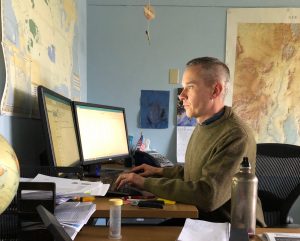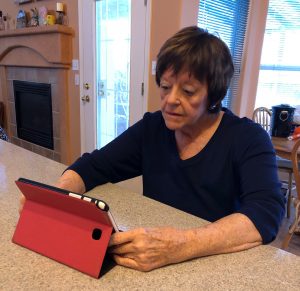By Devin Muzzey / New Mexico News Port
The U.S. Census Bureau is debuting an electronic version of the census for people to fill out online for 2020. This will be the first time the census will offer this option.
The census is an official tabulation of the U.S. population, used to collect various details every 10 years. Filling out the census is required of all U.S. residents, including non-citizens, and is prescribed by the Constitution. The data is used to inform government spending and political representation.
New Mexico state demographer and interim director of the University of New Mexico’s Geospatial and Population Studies, Robert Rhatigan, said this change to the census could encourage more people to participate.

“It’s just more convenient, you could do it anytime, anywhere, as long as you have access to the internet,” Rhatigan said. “You don’t have to have the paper form and you don’t have to put it back in the mail.”
“I think that there are some number of people residing in the United States who will fill it out online and who would choose not fill it out if they would have to do it by paper or phone,” Rhatigan said.
Rhatigan also said that the more people complete the census online, the more money the bureau saves.
“If they can get 50% or more of the country to respond online, it’s safe to say that it will save the census bureau $1 billion or more than had all of those people responded by paper,” Rhatigan said.
With the bureau currently estimating between 55% and 60% online turnout nationally, Rhatigan said that it’ll probably be lower in New Mexico. The state is considered hard-to-count because many residents live in hard-to-reach rural areas and there is a high population of Native Americans and Hispanics who are often undercounted.
Albuquerque resident and registered nurse Donna Burns, 69, is planning to use one of her personal electronic devices to do the census this year.
“It’s just more convenient for me to do it online because I can complete it whenever I want and I don’t have to worry about mailing it back,” Burns said.
“With everything online nowadays, it only makes sense to do it this way. It’s the way of the future.”

At the same time, Burns fears that cybersecurity might be an issue for people who choose this option.
“Sure, it may be more convenient, but is it safer? I don’t know, and that’s what concerns me,” Burns said.
The Census Bureau is ensuring people that their cybersecurity program will protect the nation’s private information using methods that follow federal security standards.
Rhatigan explains that the bureau has teamed up with big technology companies such as Amazon, Facebook, Google, and Microsoft in assisting with cybersecurity support.
He also makes it clear that the online version of the census is not the only one with risks.
“It’s important to keep in mind that while the risks of inadvertent disclosure are different for the online option, there’s still a risk for the paper option falling in the wrong hands. Yes there are risks but there are risks in any data-capture method,” Rhatigan said.
The online version of the census will ask the same questions as the paper and telephone options. However, there are some changes from the last census in 2010 when it comes to the variety of answers. For example, in addition to being asked to select a race, respondents will be asked for their country of origin.
It will also be more difficult to skip questions when filling out the census online. Rhatigan said that with the online census, you will be prompted a couple of times to respond to any question not answered; unlike with the paper version where it’s easier to skip questions.
The online version of the census will be available on March 12, which is also when distribution of the paper version will start. April 1 is National Census Day and all households will have received an invitation by then.
Devin Muzzey is a reporter for the New Mexico News Port. He can be reached on Twitter @MuzzeyDevin or at nmnewsport@gmail.com.